Note: This is the third article in a series on the Benjamin Franklin, George Washington, Alexander Hamilton, Henry Clay, Henry Carey, Abraham Lincoln American System of Economics that built the U.S. as the greatest industrial nation with the highest standard of living in history. Part One is How Benjamin Franklin and Alexander Hamilton Built the Modern World. Part Two is How Alexander Hamilton Built the U.S. Economy.
While I majored in economics and finance my research unveiled to me the American System of Economics of Benjamin Franklin, Alexander Hamilton, Daniel Raymond, Frederick List, Matthew Carey, Henry Clay, Henry Carey, Abraham Lincoln, and others. This opened a whole new world to me. Their economic system made historical discoveries far superior to the British monetarist economics of Smith, Ricardo, Malthus, Mill, and Keynes, as well as the Marxists.
I was amazed to learn that the Alexander Hamilton-Henry Carey economic system that built the U.S. was the model that numerous nations worldwide used to develop their industrial economies in order to free themselves from the old monetarist imperial-colonial economics.
The Higher Principle
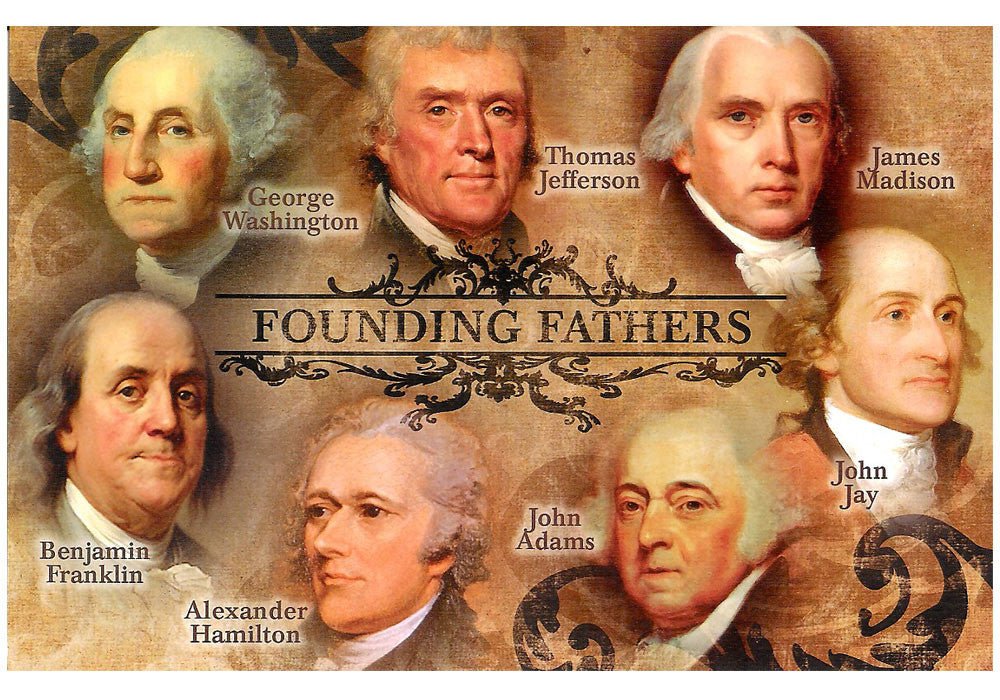
The United States is the only nation in history based on the fundamental sacredness of the individual endowed with Divine creative Reason (Imago Dei) as established in the Declaration of Independence, U.S. Constitution, and Bill of Rights. The American economic system is based on the premise that the greatest value in an economy is the creative power of the population to build economic growth and produce wealth.
The economic program developed by Benjamin Franklin, Alexander Hamilton, and George Washington stabilized and developed the new United States nation. They stated that to have economic growth in a nation there must be an investment into both capital (industry, agriculture, technology, infrastructure) and the population (standard of living, education, culture, health, safety) in order to create surplus value for re-investment for social and economic growth.
Their economic program was continued by the American Second Generation of Mathew Carey, Henry Clay, John Quincy Adams, Daniel Webster, and others. Henry Carey took over the leadership of the American economic system and worked with Abraham Lincoln to build US. Industry and to discontinue the institution of slavery.
Henry Carey
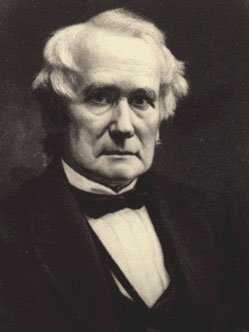
Henry C. Carey (1793-1879), son of American Revolutionary War hero and Franklin protégé Mathew Carey, became the leading political-economist of the American School of Economics from the 1840s to the 1870’s. He was the chief economic advisor to Presidents Lincoln, Grant, Hayes, Garfield, and McKinley. Carey’s system of national economy was the dominant U.S. economic policy until the 1970s. The Carey-Lincoln program ended the American institution of slavery and succeeded to save the Union in the Civil War. After the War, the Carey-Lincoln domestic economic plan and foreign policy built the U.S. as the greatest industrial nation with the highest standard of living in history. It was also used as a model by numerous nations worldwide to develop their domestic economy.
Lincoln and Carey
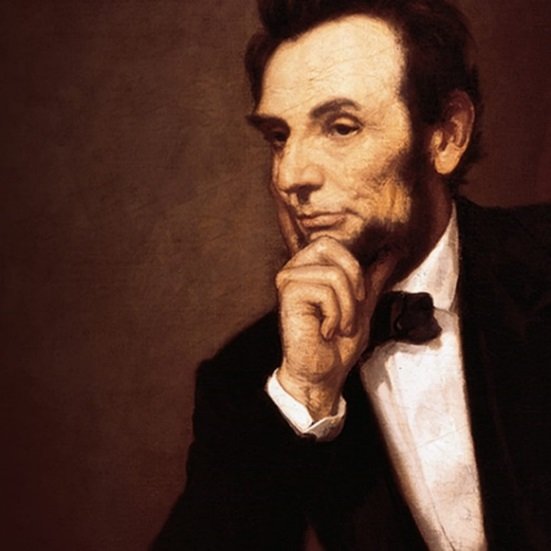
Abraham Lincoln and Henry Carey continued the fight against slavery led by Benjamin Franklin and Alexander Hamilton. The U.S. became a major power in the 19th Century but was still burdened and divided over the issue of slavery. The final confrontation between the anti-slavery states and the southern slave states resulted in a bloody Civil War from 1861 to 1865 with 655,000 dead and a total of 1.69 million casualties.
Abraham Lincoln (1809-1865) was elected President of the United States from 1861 to 1865. He succeeded in preserving the Union and defeated the revolt of the Southern Confederacy. He abolished slavery and bolstered the federal government. Lincoln implemented the Henry Carey economic program which modernized the U.S. economy.
After Lincoln’s death, Henry Carey led the programs for Reconstruction making the U.S. the largest industrial economy in the world. Carey went on to influence Presidents Ulysses S. Grant, Rutherford B. Hayes, James Garfield, Benjamin Harrison, William McKinley, and others. Carey developed a network of politicians and economists from many nations working to advance industrial development, trade, peace, and ending slavery. His major writings include: The Principles of Political Economy (1840), Harmony of Interests (1851), and The Slave Trade (1853).
Henry Carey/Abraham Lincoln economic policies included:
- End the institution of slavery throughout the United States, North and South
- Protecting American industry with selective import tariffs
- Alliance of a ‘Harmony of Interests’ between industry, agriculture, and labor for economic development, technology, education, and higher paid skilled jobs
- Public debt restructuring
- Public investment in infrastructure and internal improvements
- National financial system and cheap credit to promote industry, science, technology, commerce, and trade
- Modernize agriculture with technology
- Free land for farmers
- Western expansion
- Immigration to increase the population
- Industrialization of the South
- Public support for the development of science, technology, industry, art, culture, and public education
- Raising the standard of living, quality of life, public health, and safety
- Transcontinental railroad and telegraph system
- Relations with foreign nations in a ‘community of principle’ for programs of world economic development, capital investment, opening markets for trade, ending the trade and institution of slavery, and promoting peace
Henry Carey Writings
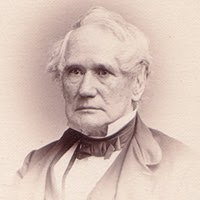
The Principles of Political Economy (1840) – Carey proposed tariffs to protect and promote U.S. industry, agriculture, and jobs, in-order to prevent foreign dumping of cheap products on the U.S. Carey further located economic value not in accounting book values and exchange values, but rather in it the necessary cost for the population’s economic development and technological progress. Economic value is derived from the ‘productive power of labor’, the productive activity of the economy.
Harmony of Interests (1851) – Carey proposed an alliance of industry, labor, and farmers to protect their ‘harmony of interests’ for economic protection and growth. Carey also attacked and debunked the Malthus and Riccardo mythical doctrines and propaganda of overpopulation. Carey showed how population increase is needed and sustained by technological improvement of agriculture and industry. That natural resources are not limited, rather science and technological advancement ‘creates’ new resources. Carey further demonstrated the Riccardo notion of land exhaustion is also wrong, that the soil is improved through technology, crop rotation, fertilizer, dredging, and irrigation.
The Slave Trade, Foreign and Domestic (1853), the Carey work is the best argument against slavery ever written, showing that it is not only morally evil, but is an unsound economic system maintained to keep imperial empires in power to loot labor and resources (British, Dutch, French, Spanish, Portugese, Belgium, Austrian, Genoa, Venice, Ottoman, etc.). Slavery is further established to produce cheap crops and goods; and to prevent technological development and higher education in-order to keep the population dependent on the imperial slave holders. A national economy cannot survive without economic development, which requires a higher standard of living, education and skills training, science and technological innovation – which does not happen in a slave society. Slavery lowers the value of human life, labor, and the standard of living of both slave and non-slave persons. Slavery wastes human potential, creativity, and innovation.
The Issue of Slavery
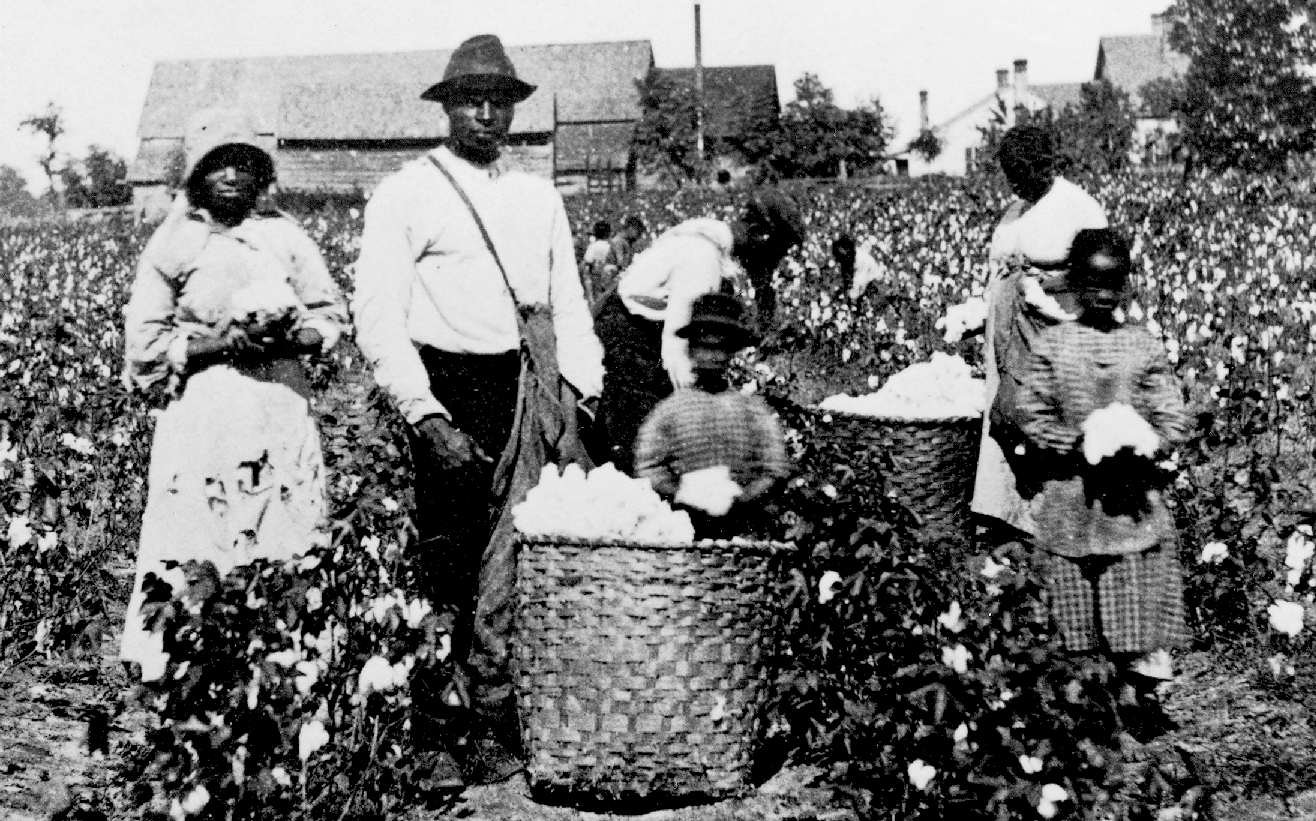
The country had become increasingly polarized over slavery from the 1789 signing of the Constitution until the end of the Civil War in 1865. The Carey-Lincoln program for industrial development and the end of slavery had become increasingly popular across the country. All northern states had abolished the slave trade by 1804. But it was not a simple task, the abolition of slavery was problematic and had baffled the Founders who in most part wanted to see an end of it. The issue deadlocked the country and drove it to an ultimate civil war.
According to slavevoyages.org, a total of 12.8 million Africans were shipped as slaves across the Atlantic Ocean over 400 years to North America, South America, and the Caribbean. British North America received 9.7 percent of the African slaves. Slave trading nations included Britain, France, Spain, Portugal, Netherlands, and Denmark. The American slave trade was carried out by ship merchants out of Massachusetts, Connecticut, Rhode Island, and New Hampshire.
According to the New England Historical Society, the primary problem was that every state was dependent on the slave economy. Every state grew food for the slaves. New England states shipped slaves and needed slave produced cotton for their textile industries. Northern states manufactured clothing and tools for the slaves and provided railroads and shipping for cotton. Britain and France needed Southern cotton for their textile industries.
“Cotton was king” and dominated the U.S. economy. The Eli Whitney invention of the cotton gin in 1793 made cotton a tremendously profitable business. According to the National Cotton Council of America, U.S. cotton production grew from 300,000 bales in
1812, to 750,000 bales in 1830, to 4.5 million bales in 1860. The south produced 75% of the world’s cotton and accounted for 60% of all U.S. imports.
The southern plantation system used slaves to produce profitable cash crops, such as cotton, tobacco, and sugarcane. According to U.S. Census data, there were 697,681 slaves in the U.S. in 1790. By 1860 there were almost 4 million slaves in the U.S.
Since 1789, the plantation slave states fought against internal improvements, the Bank of the United States, Western expansion, and industrialization. The southern planters opposed manufacturing, infrastructure development, banking, public credit, taxation, public education, public debt, shipbuilding, and railroads. According to U.S. Census data, up until only a few decades ago, the mostly agrarian Southern states had the highest poverty, lowest standard of living, lowest educational levels, low credit rating, and lowest manufacturing production.
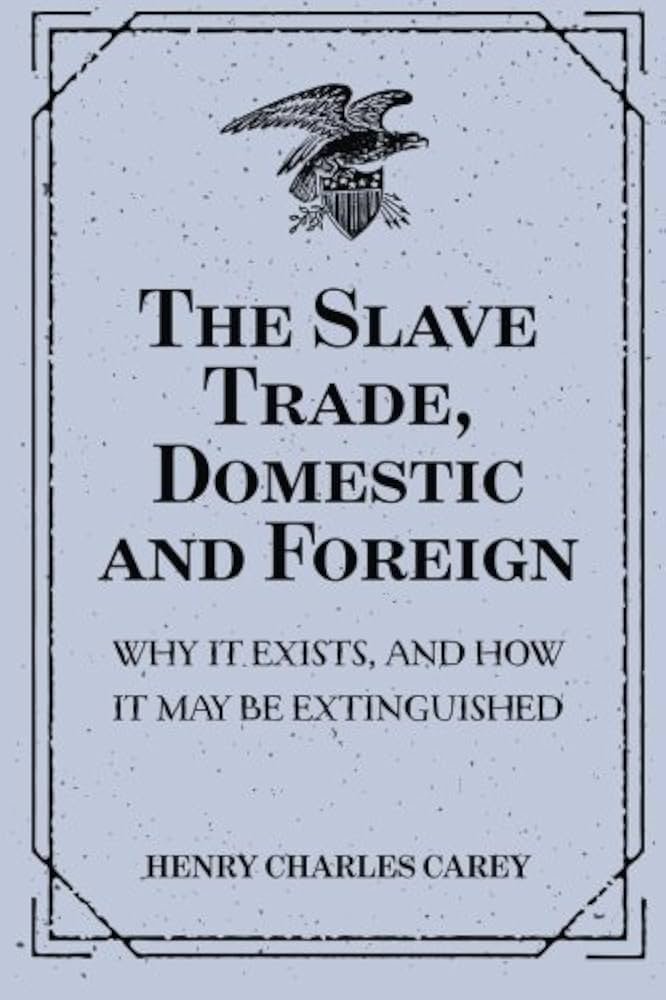
The American Civil War
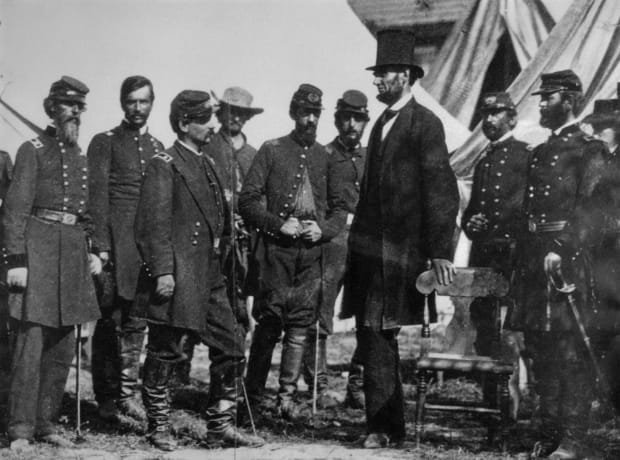
I am simply astonished that Americans, academic revisionists, and the media today attack Abraham Lincoln’s efforts to protect the Union and ending slavery. What planet are they from?
After Abraham Lincoln was elected president in 1860 on an anti-slavery platform, 11 southern states seceded from the Union. War broke out in April 1861 and lasted until April 1865, leaving 785,000 dead and 419,000 wounded, disfigured, or handicapped. The bloody war did not go easily for Lincoln and the Union Army, hampered by strong Southern military resistance, anti-war factions in the Democrat and Republican parties, pro-British propaganda, London-Boston-New York banks, as well as New England radical abolitionists calling for a separation to form two countries.
According to numerous books, articles, and films, Britain and France, and possibly Austria and Spain, were on the verge of military intervention on the side of the South in 1862. This was part of a long strategy by the British-Dutch-Swiss-Genoa-Venice financial empire since the American Revolution to recapture the American colonies. Their plan failed with the War of 1812. With the Civil War they supported the Confederacy to militarily force the Union to recognize the Confederate States. This would have left the Union vulnerable in a pincer move between British Canada and the British backed South. (Sources: Foote, Canton, Henry Carey, Lincoln, Salisbury, Chatkin, Adams).
In 1863 the North almost lost the war. The Union’s western campaign was bogged down in Vicksburg and Robert E. Lee’s Confederate Army was marching north to attack Washington DC to force Lincoln to end the war. Britain and France were preparing to enter the war. All hopes depended on the Battle of Gettysburg.
In July 1963, Union forces defeated the Southern Army in the bloodiest battle of the war at Gettysburg, Pennsylvania. That same month the Union was victorious at Vicksburg and took control of the whole Mississippi River, splitting the Confederacy. In addition in September 1863, America’s ally Russia sent its naval fleet, half docked in New York and half in San Francisco, prepared to enter the war if Britain and France intervened. Prussia which helped finance the Union war also threatened France on its border. As a result, Britain dropped its plan to take back America. (Sources: Harper’s Weekly, New York Times, DeArnaud, Adams, Chaitkin, Salisbury).
The Carey-Lincoln Circle That Saved the Union
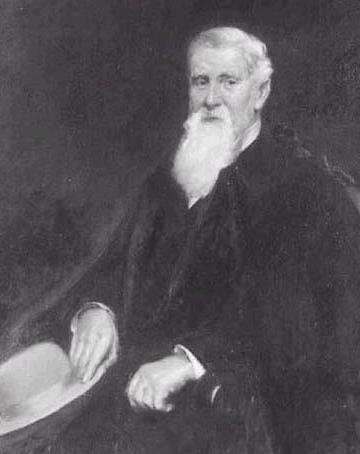
Jay Cooke
The Carey-Lincoln Circle pushed Hamilton economic policies to build U.S. industry and win the Union’s Civil War effort. (Sources: Kelly, Elder, Colwell, Carey, Salisbury, Chaitin)
Jay Cooke (1821-1905), ‘financier of the war’ who raised money to fund the Union in the Civil War. First major investment banker in the U.S., Northern Pacific Railway.
William Elder (1800-71), Philadelphia economist and friend of Henry Carey. Elder worked in President Lincoln’s Treasury Department. He worked with Jay Cooke on financing the Union in the Civil War. Elder wrote several works on economics.
Thaddeus Stevens (1792-1868) pro-Union and anti-slavery crusader from Pennsylvania who worked to finance the Union during the Civil War. He was the leader of the post- Civil War Radical Republicans for Reconstruction. He was a member of the U.S. House.
William D. Kelly (1814-90) Philadelphia economist and Congressman 1861 -1890, who was a very close friend of Lincoln and Henry Carey. Kelly worked closely with William McKinley. Kelly wrote several works on economics.
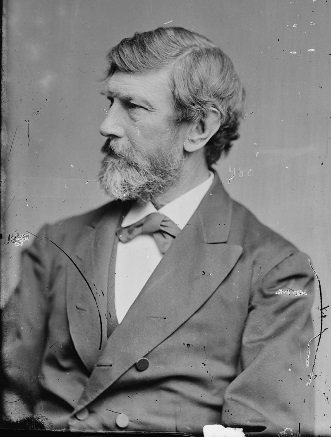
William D. Kelly
Stephen Colwell (1806-85), Carey ally, economist, industrial, head of U.S. Revenue Commission in Lincoln administration.
Salmon P. Chase (1808-73), Secretary of Treasury in Lincoln administration 1861 to 1864, U.S. Senator, Governor of Ohio, Chief Justice of the U.S. Supreme Court 1864 to 1873.
Gen. Winfield Scott (1786-1866) of Virginia was a U. S. Army general from 1812 to 1861. He was the Commanding General of the U.S. Army from 1841 until 1861 but continued as an advisor and diplomat for Lincoln. Scott was a commander in the War of 1812, Mexican-American War, and the Civil War. He negotiated peace and prevented war with Canada and Britain in 1837-38. He ran for president and worked with Henry Clay.
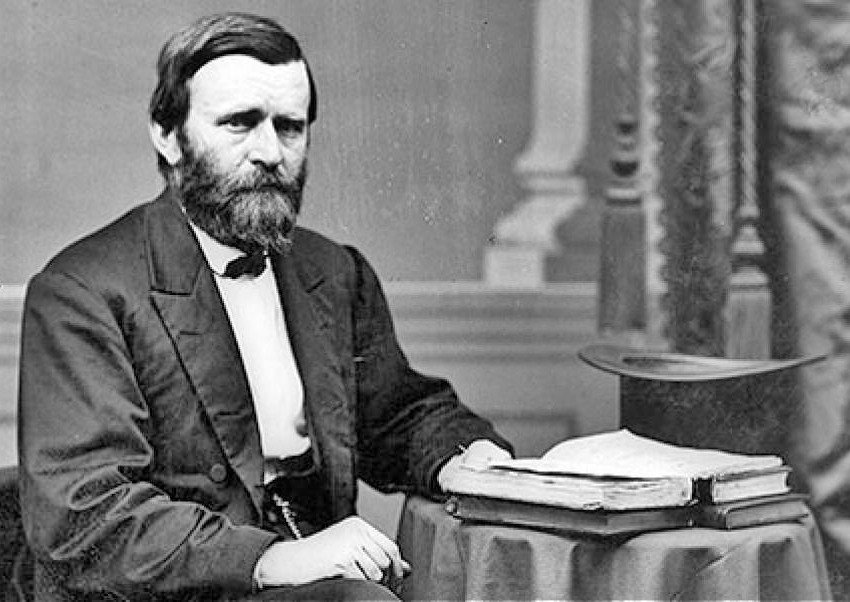
Gen. Ulysses S. Grant (1822-1885), Civil War Union Commander of the U.S. Army 1864 to 1869, U.S. President 1869 to 1877.
Gen. William T. Sherman (1820-1891), Civil War Union general 1861 to 1865, Commander of the U.S. Army 1869 to 1883.
Gen. Philip Sheridan (1831-1886) Civil War Union general 1862 to 1865, Commander of the U.S. Army 1883 to 1888.
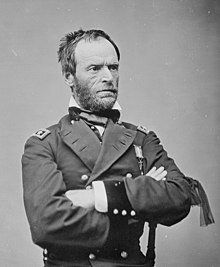
Gen. William T. Sherman
The Henry Carey Post-Civil War Circle
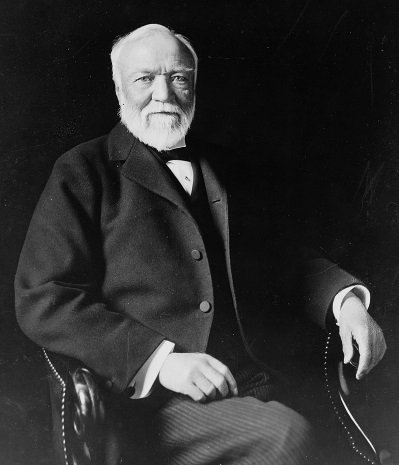
Andrew Carnegie
The Carey Circle was made up of Philadelphia industrialists, in the home town of Benjamin Franklin, Mathew Carey, and Henry Carey. Philadelphia was the leading industrial center in the U.S. in the 19th Century.
Andrew Carnegie (1835 -1891) a Scottish-American industrialist, one of the richest men in history. Led the expansion of the U.S. steel industry. Carnegie Steel, Pittsburgh Steel, Union Iron, Keystone Bridge, Hartman Steel, Frick Coke, Pittsburgh Locomotion, and Scotio Oil.
Thomas Edison (1847-1931), a major American inventor, industrialist energy utilities. Edison Electric, General Electric, 1,093 patents.
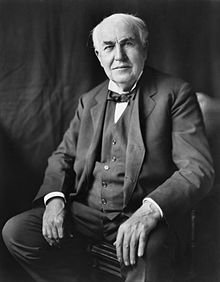
Thomas Edison
George F. Baker, University of Pennsylvania, Franklin Institute, mentor of Thomas Edison.
Joseph Wharton, Wharton School-University of Pennsylvania, Bethlehem Steel, Industrial League.
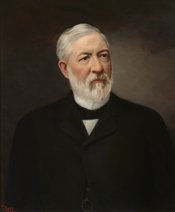
James G. Blaine
Wharton Barker (1846-1921), Barker Bros. Bank, presidential campaigns for Garfield and Harrison.
James Garfield (1831-1881) U.S. President 1881, assassinated. Civil War general, U.S. House.
James G. Blaine (1830-1893) ran for president, Secretary of State, U.S. House, U.S. Senate.
William McKinley (1843-1911) U.S. President 1897 to 1901, assassinated. Governor of Ohio, U.S. House.
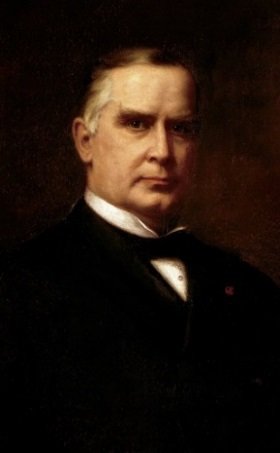
William McKinley
Pennsylvania Railroad – Joseph D. Potts-oil, Thomas A. Scott, J. Edgar Thompson, William J. Palmer.
Baldwin Locomotive – Mathias Baldwin, Matthew Baird.
Other Philadelphia industrialists – Isaac Clothier, William and Coleman Sellers machine tools, Samuel M. Felton, Benjamin Silliman Jr. petrochemical
(Sources: Nasaw, Hammond, Hamilton, Morris, Kaplan, Olcott, Chernow, Sharkey, Salisbury, Chaitkin).
Carey Circle Foreign Diplomacy
The Carey Circle forged diplomatic relations and a “community of principle” with several nations around Hamilton/ Carey policies for industrial development and trade. Nations around the world observed the rapid industrial development of the U.S. and adopted the economic programs of Hamilton, List, and Carey for their own country’s economic growth.
Germany
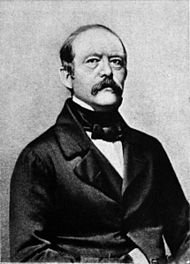
Otto von Bismarck, Germany
Otto von Bismarck (1815-1898), Prussian/ German Chancellor, united the German nation out of smaller princely states in the 1860s and ‘70s. Germany was a weak agrarian nation with little industry. In 1879 faced with economic decline, Bismarck and industrialists Wilhelm von Kardorff, Emil Rathenau, Franz Reuleaux, and others, launched a program of economic development and industrialization based on the policies of Hamiltonian economist Frederick List and worked closely with the American Carey Circle. Bismarck’s policies included financial reforms, protective tariffs, social reforms, education, infrastructure, and promotion of industry, technology, steel, chemical, electric power, machine tools, shipbuilding, railroads, canals, roads, shipping, etc. (Sources: List, Plfanze, Lothar, Henderson)
Russia
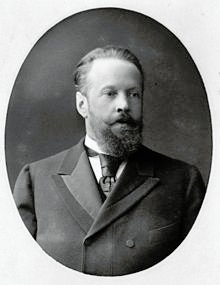
Count Sergei Witte, Russia
Count Sergei Witte (1849-1915), Russian Finance Minister and Prime Minister, was influenced by the economics of Hamilton, List, and Carey. Russia was a long-term ally of the U.S. since its birth. Carey associated U.S. ambassadors to Russia were Cassius M. Clay, Andrew Curtin, George H. Boker, and Wickham Hoffman. The Carey Circle helped industrialize Russia, first centralized around railroads and the Trans-Siberian Railroad. Witte stabilized the ruble, restructured debt, set up protective tariffs, tax reforms, court reform, established vocational schools, and attracted foreign capital investment. The Witte government worked with industrial interests, such as Dmitri Mendelelev, the Dolgorokov family, and Grand Duke Konstantin Nikolayevich, to identify natural resources, expand industries, railroads, shipbuilding, steel, machine tools, transportation, and communication. (Sources: Horcave, Kaplan, Chaitkin, Salisbury).
Japan
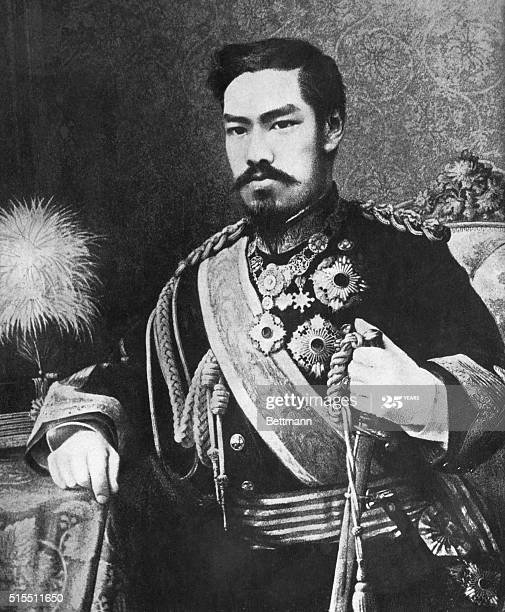
Emperor Meiji, Japan
Emperor Meiji (1852-1912) launched an economic revolution using Carey and List economics to modernize and industrialize Japan. The Emperor’s reform officials included those who had studied Hamilton, Carey, and List economics, such as Yukichi Fukuzawa, Toshimichi Okubo, Okuma Shigenobu, and Prince Iwakura Tomoni. The Meiji reform overthrew the old feudalist Tokogarwa warlord power structure and created a modern central government. With the assistance of American Carey networks, the new Japanese government transformed the isolated feudal state to an industrial world power. Reforms included improved infrastructure, protective tariffs, expanded trade, and a national bank and credit for development. The Industrial Promotion Board developed industries such as transportation, machine tools, engines, locomotives, textiles, steel, railways, shipbuilding, telegraph, etc. Education was expanded with public schools and universities with studies in science, math, and engineering. (Sources: Keene, Kaplan, Beasly, Chaitkin).
China
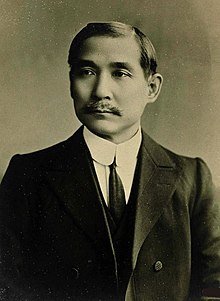
Sun Yat-Sen, China
Sun Yat-Sen (1866-1925) was the first president of the new Republic of China in 1912, he industrialized China with the economics of Hamilton, List, and Carey, which he had studied in America and Europe. Sun and the nationalists expanded industrialization, railroads, infrastructure, roads, canals, electrical energy, communication, harbors, public utilities, steel and iron manufacturing, irrigation, and agriculture. The reforms included universal free education, vocational training, civil service, and the promotion of science. (Sources: Sun Yat-Sen, Hsu, Wang).
Ireland
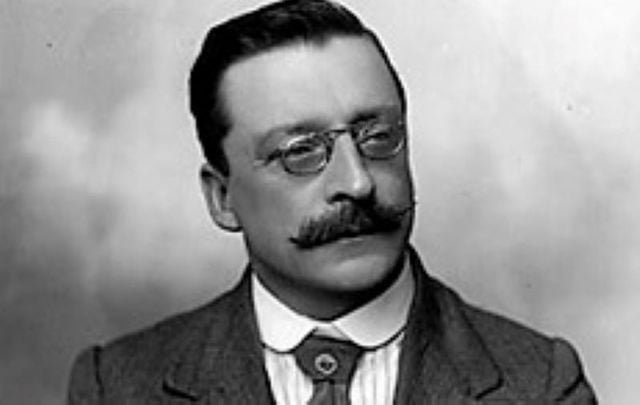
Arthur Griffith, Ireland
Irish-American Henry Carey and his networks supplied weapons and funding for the Irish Revolution against Britain. Arthur Griffith (1871-1922) founder of the republican Sinn Fein party and president of the newly independent the Irish Free State, implemented Hamilton, List, and Carey economic policies. Carey associated Irish revolutionaries included William Carroll, John Devoy, Robert Ellis Thompson, and Terrence Powderly. Griffith established new banking and credit, protective tariffs, tax reform, and agricultural modernization. National infrastructure improvements built an electrical system, railroads, canals, roads, fisheries, shipyards, shipping, and harbors. The new government promoted increased manufacturing, commerce, and trade. (Sources: Sinn Fein, Giblin).
Mexico
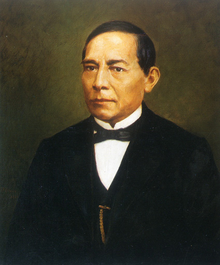
Benito Juarez, Mexico
General Ulysses S. Grant supplied weapons and support for the Mexican Revolution against the French. After the overthrow of French rule in 1867, Mexican presidents Benito Juarez and Porfirio Diaz were aided by the Carey Circle in modernization and industrialization with foreign investment, railroads, infrastructure, manufacturing, communication, commercial agriculture, etc. (Source: Moreno-Brid).
Sweden- Henry Carey’s writings were translated into Swedish and Carey was a member of the Royal Swedish Academy of Sciences. Carey economic policies transformed the nation from an agricultural economy to an industrialized, urbanized economy with banking, commerce, and a high standard of living. (Source: Royal Swedish Academy of Sciences).
Italy– National unification was established in 1861. Henry Carey’s writings were translated into Italian and were used for national industrialization with textile, chemical, steel, shipbuilding, railroads, banking, engineering, etc. (Source: Kemp).
Others nations included Brazil, Peru, Columbia, India, Thailand, Australia, and others.
Recommended Reading
- Abraham Lincoln Collected Works, Rutgers University Press, New Brunswick, NJ, 1953.
- Abraham Lincoln, a History, John G. Nicolay, John Hay, Century, NY, 1975.
- Andrew Carnegie, David Nasaw, Penguin, NY, 2007.
- Biography of James G. Blaine, Gail Hamilton, Norwick, 1895.
- Henry Carey, The Principles of Political Economy, 1840
- Harmony of Interests, 1851
- The Slave Trade, 1853
- Papers, Pennsylvania Historical Society, Philadelphia
- The Civil War: A Narrative, Shelby Foote, Random, NY, 1958, 1974, 2011.
- The Civil War and the American System: America’s Battle with Britain, 1860-1876, Allen Salisbury, Campaigner, NY, 1978.
- Stephen Colwell, Papers, Pennsylvania Historical Society, Philadelphia
- U.S. Treasury Reports on taxes, trade, manufactures
- Edison, Edmond Morris, Penguin, NY, 2019.
- William Elder, Questions of the Day: Economics and Social, Philadelphia 1871.
- Henry Charles Carey: A Study of American Economic Thought, A.D.H. Kaplan, John Hopkins Press, Baltimore, 1931.
- House of Morgan: An American Banking Dynasty and the Rise of Modern Finance, Ron Chernow, Atlantic, NY, 1990.
- How Henry Carey and the American System Nationalists Built the Modern World, Anton Chaitkin, American Almanac, NY, 1997.
- William D. Kelly, Speeches, Addresses, and Letters on Industrial and Financial Questions, Philadelphia, 1872.
- Life of William McKinley, Charles S. Olcott, Houghton Mifflin, NY, 1916.
- Money, Class, and Party: An Economic Study of the Civil War and Reconstruction, Robert P. Sharkey, John Hopkins Press, Baltimore, 1959.
- President McKinley: Architect of the American Century, Robert W. Merry, Simon & Schuster, NY, 2017.
Germany
- Bismarck and the Development of Germany, Otto Pflanze, Princeton University Press, NJ, 1963.
- Bismarck, the White Revolutionary, Goll Lothar, George Allen Unwin, London, 1980.
- Industrialization in Nineteenth Century Europe, Tom Kemp, Longman, London, 1985.
- Rise of German Industrial Power: 1834-1914, W.O. Henderson, University of California Press, Berkeley, 1975.
Russia
- Count Sergei Witte and the Twilight of the Russian Empire, Sidney Horcave, Armonk, 2004.
- The Life and Times of Sergei Witte, Francis Wcislo, Oxford, 2011.
- Lincoln and the Emperors, A. Tyrner Tyrnauer, Harcourt Brace, NY, 1962.
- Russo-American Relations During the American Civil War, West Virginia University, 1908.
- Russian Fleet in New York, New York Times October 1863; Harper’s Weekly Oct. 17, 1863; November 7, 1863.
- The Union and Its Ally Russia, Charles A. DeAenaud, Gibso, 1890.
Japan
- Emperor of Japan: Meiji and His World, Donald Keene, Columbia University Press, NY, 2005.
- The Meiji Restoration, W.G. Beasley, Stanford University Press, CA, 1972.
China
- The Oldest and Youngest Empire: China and the United States, William Speer, Scranto, San Francisco, 1870.
- Sun Yat-Sen, The Vital Problem of China, 1917.
- The International Development of China, 1919.
- National Reconstruction of China, 1919.
- Sun Yat-Sen, Marie Clair Bergere, Stanford, 2000.
- Sun Yat-Sen’s Political and Social Ideals, Leonard Hsu
Mexico
- Development and Growth in the Mexican Economy, Juan Carlos Moreno-Brid, Oxford, 2009.
Ireland
- The Economic Development of Ireland in the Twentieth Century, Thomas Giblin, Routledge, 1988.
- Sinn Fein: A Century of Struggle, Michael Mac Donncha, Dublin, 2006.
- The Transformation of Ireland 1900-2000, Diarmaid Ferriter, Profile, London, 2005.



